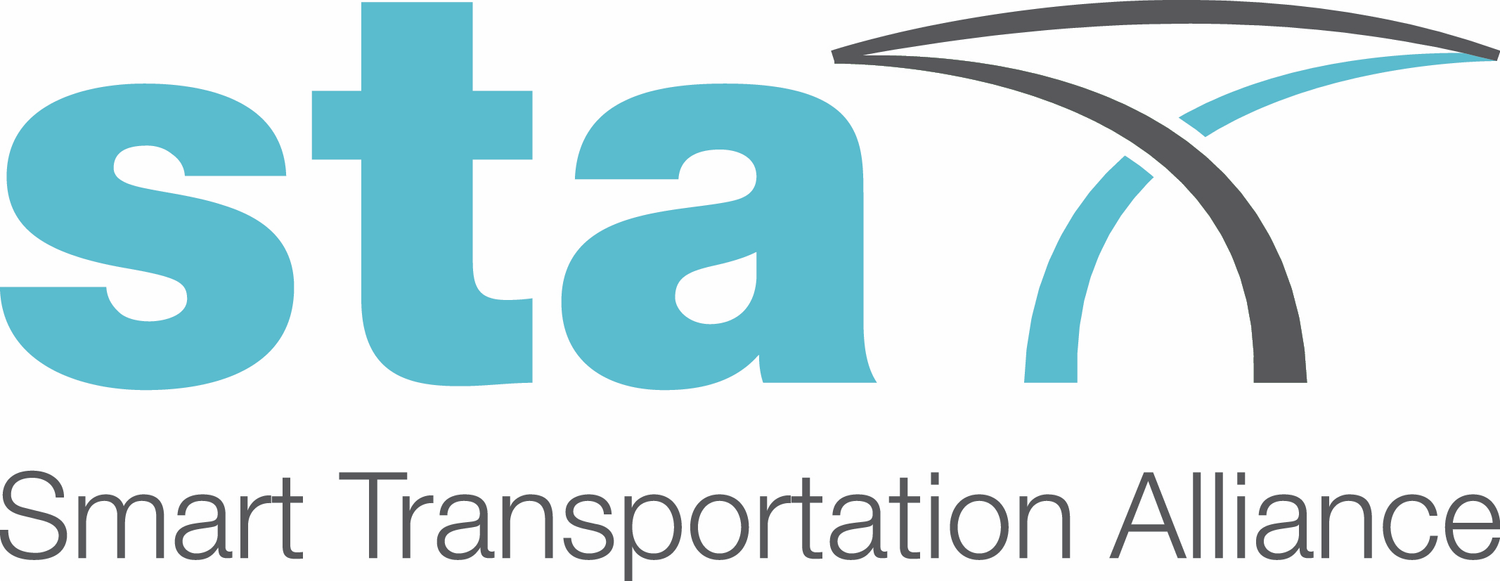STA Newsletter
Issue # February 2016
A bi-monthly online journal providing news and background about activities undertaken by STA with a view to improving the methods, technologies and standards associated to transportation infrastructures.
2016 STA Annual Conference: 90 high-level experts gathered to define the Smart Transportation Infrastructures of the Future
4 February 2016
The Smart Transportation Alliance gathered together 90 high-level experts from across Europe and North America at the first edition of its landmark event, the 2016 STA Annual Conference & Innovation Awards, held in Brussels on 3 February 2016.
The event attracted experts from the areas of finance, private industry, academia and government to openly discuss and debate the future of Smart Transportation Infrastructures.
More on the conference, including full presentations and links to information about the Innovation Awardees, can be found on the events page of the website.
NB: A Brief Summary in French available here.
The 1st Annual STA Conference and Innovation Awards cited in global news outlets
5 February 2016
Please access below the media coverage of the STA Best Innovation Project awardees, the TEV Project and FOTsis, across several countries worldwide:
The TEV Project was interviewed by a leading Scottish paper The Scotsman.
The Fifth Estate, a leading British and Australian daily, reviewed the subject of driverless mobility innovation in the TEV Project.
The FOTsis Project was covered by the Spain’s leading financial newspaper El Economista.
Sustainability: green is the new black
12 February 2016
Transportation networks must satisfy high mobility demands, but at the same time must do it with the lowest possible energy consumption and CO2 emissions. At the same time, plenty of innovative 'recipes' are available, even if their market uptake has been quite limited to date.
Under the name Sustainability: green is the new black, the column featured in the first 2016 issue of Thinking Highways, STA Chairman José F. Papí discusses the solutions for improvements to transportation infrastructures that are not only sustainable but include a mix of transport modes for long-term success.
"Risky Business" - Recondition and reuse of safety barriers
12 February 2016
Steel material presents excellent mechanical characteristics. As well as strength it possesses high deformation capacity, which not only makes it suitable for cold (e.g. by roll forming and stamping) or hot forming, but also allows it to deform and absorb energy, notably in case of impact. It can be tempting to reuse an old road barrier or a device damaged after a vehicle impact because, in theory, the mechanical characteristics of the steel permit it to be easily roll-formed again.
Under the title "Risky business", the article, co-authored by Mr. Patrick Le Pense, Member of STA Management Committee, and Ms. Claudia Cofano, Member of the European Committee TC 226 for Road Restraints, analyses several challenges to the reconditioning and reuse of safety barriers.
"Our Organisation" section of the STA website translated into four languages
10 February 2016
In an effort to maximise its outreach to the global transport infrastructure community the Smart Transportation Alliance has translated its 'Our Organisation' page into German, Spanish, French and Italian.
“Adaptation of infrastructure to climate requires taking in account every stage of the infrastructure management process: planning, design, construction, operation and maintenance.”
NEWS OF INTEREST
6th Annual Transport Research Arena, 18-21 April 2016 Warsaw (Poland)
HIPEBA, “High Performance Steel for Safer and More Competitive Safety Barriers”, for whom STA is the dissemination and exploitation coordinator, is a confirmed presenter at the TRA Poster session in the TRA2016 Marketplace. The poster will be exclusively available during the 6th Annual Transport Research Arena whose focus on Innovative Solutions for Tomorrow’s Mobility is a strong backdrop to showcase the work of HIPEBA.
The TRA2016 Conference seeks to contribute to innovation in sustainable mobility for Europe, by bringing together all the stakeholders of the transport system.
ITF Report: Urban Mobility System Upgrade
How shared self-driving cars could change city traffic
What if all car trips in a city were undertaken by a fleet of fully coordinated self-driving vehicles? In light of rapid urbanisation, the development of self-driving cars and a “shared economy” (based on optimising usage of spare capacity), the International Transport Forum (ITF) investigates the potential impacts of a radical upgrade to today’s urban mobility system.
Dolomite rail link in Italy to be studied
A feasibility study for the constuction of a rail link between Calalzo, Cortina d’Ampezzo and Toblach (Italy) is to be undertaken within three years, following the signing of a memoradum of understanding by the Veneto and Trentino-Alto Adige regional authorities on 13 February 2016.
Calalzo is the terminus station of a single-track unelectrified line from Belluno, while Toblach is around 65 km away on the electrified Val Pusteria line. The new line would be suitable for speeds of between 80 and 100 km/h with a minimum curve radius between 300 and 400 m. The southern section via either Valle del Boite or Auronzo di Cadore is estimated to cost €500m to €700m, the northern section €500m.
Selling Bike Lanes: Lessons from Calgary, Canada’s Ambitious Biking Network
Whether it’s grounded in monetary costs or perceived traffic impacts, new bicycling infrastructure often raises a heated debate.
While many might consider Calgary (Canada) an isolated cattle town, it actually has a dense downtown, a robust transit system, and a network of bike lanes along the Bow River.
The problem is that nature trails lack connections to their destinations downtown. To fix this, the city proposed a “European-style” network of protected, two-way lanes, to be installed all at once, so that no bicyclist downtown was ever more than a few blocks from a low-stress route. But the ambitious proposal drew serious backlash from some stakeholders and decision makers.









